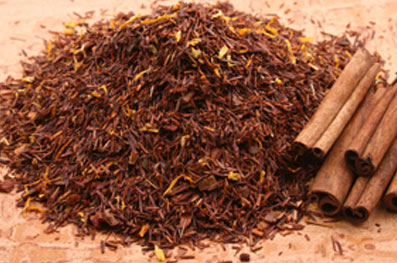A brief history of rooibos in South Africa...
There is a plant cultivated in South Africa which is called "red tea", but is not actually a species of tea. Its common name is Rooibos, which means red bush in Afrikaans, because of its reddish stems and the red-orange colour taken on by its leaves through oxidisation

Its botanical name is aspalatus linearis, belonging to the legume family, like the broom. This plant does not contain theine but is nevertheless rich in tannins like tea. It is thus associated with the world of tea, rather than herbal brews, because of its spicy, woody taste and coppery colour, similar to that of black tea.
It is also traditionally consumed with a dash of milk and sometimes sugar to taste.
This plant was only recently brought under cultivation in the 1930s. It was a Russian, Benjamin Ginsberg, from a large family of tea importers established in the Cape region, who discovered it. At that time, it was growing wild and was picked and consumed by the local population in infusion form.
Ginsberg launched trials to cultivate this plant and process it in a similar way to tea. With its very sweet and aromatic infusion, it quickly obtained great success.
Where does our rooibos come from?
This species is endemic to South Africa. Our plantations are currently concentrated in the Cederberg, or Cederberg Mountains, some 300 km north of Cape Town.
The harvest takes place in the first three months of the year, which corresponds to the summer season in South Africa. All the twigs selected from the bushes are around 30cm long. They are then cut into smaller pieces, moistened slightly and left to oxidise for 8 to 24 hours.
It is at this stage that, in the open air, the cutrooibos takeson its beautiful orange-red hue. It then dries in the sun before being sterilised in the furnace and packaged.


